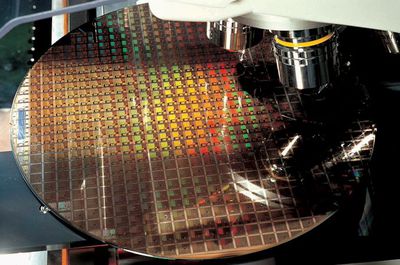TSMC 2nm Chip Production Hits 60% Yield, on Track for iPhone 18 Pro
TSMC has achieved better-than-expected results in trial production of its 2-nanometer chip technology, with yield rates exceeding 60%, according to Taiwanese supply chain sources (via Liberty Times Net). The news suggests the company is well-positioned to begin 2nm mass production in 2025, which could see its use in Apple's iPhone 18 Pro models the following year.

The semiconductor manufacturer is reportedly conducting risk trial production at its Baoshan facility in Hsinchu, northern Taiwan, where it has implemented a new nanosheet architecture that promises a significant advancement over the current 3nm FinFET process. The company plans to transfer this production experience to its Kaohsiung plant for mass manufacturing, according to the report.
TSMC's progress bodes well for Apple, with a September report from analyst Ming-Chi Kuo and a more recent rumor claiming that Apple's 2026 iPhone 18 Pro models will exclusively feature chips built on TSMC's 2nm process and 12GB of RAM. The standard iPhone 18 models are expected to continue using an enhanced 3nm process due to cost considerations.
The 2nm process is said to be generating substantial interest from potential customers, particularly in the AI sector. Indeed, company CEO C.C. Wei has noted unexpectedly high demand for the upcoming 2nm technology, suggesting production at scale will be ramped up as soon as is possible to meet that demand.
TSMC's roadmap includes the 2026 introduction of an A16 process (1.6nm-class – not to be confused with Apple's chip nomenclature), which will combine Super Power Rail (SPR) architecture with nanosheet transistors. SPR is expected to provide an 8% to 10% performance increase at the same voltage and complexity, a 15% to 20% power demand decrease at the same frequency and transistor count, and a 7% to 10% chip density increase, depending on the design.
Popular Stories
Apple's iPhone 17 Pro and iPhone 17 Pro Max models will feature a number of significant display, thermal, and battery improvements, according to new late-stage rumors.
According to the Weibo leaker known as "Instant Digital," the iPhone 17 Pro models will feature displays with higher brightness, making it more suitable for use in direct sunlight for prolonged periods. The iPhone 16 Pro and...
Apple is expected to unveil the iPhone 17 series on Tuesday, September 9, and last-minute rumors about the devices continue to surface.
The latest info comes from a leaker known as Majin Bu, who has shared alleged images of Apple's Clear Case for the iPhone 17 Pro and Pro Max, or at least replicas.
Image Credit: @MajinBuOfficial
The images show three alleged changes compared to Apple's iP...
Just one week before Apple is expected to unveil the iPhone 17 series, an analyst has shared new price estimates for the devices.
Here are J.P. Morgan analyst Samik Chatterjee's price estimates for the iPhone 17 series in the United States, according to 9to5Mac:
Model
Starting Price
Model
Starting Price
Change
iPhone 16
$799
iPhone 17
...
Apple will launch its new iPhone 17 series this month, and the iPhone 17 Pro models are expected to get a new design for the rear casing and the camera area. But more significant changes to the lineup are not expected until next year, when the iPhone 18 models arrive.
If you're thinking of trading in your iPhone for this year's latest, consider the following features rumored to be coming to...
An iPhone 17 announcement is a dead cert for September 2025 – Apple has already sent out invites for an "Awe dropping" event on Tuesday, September 9 at the Apple Park campus in Cupertino, California. The timing follows Apple's trend of introducing new iPhone models annually in the fall.
At the event, Apple is expected to unveil its new-generation iPhone 17, an all-new ultra-thin iPhone 17...
Apple's upcoming iPhone 17 Air will have a $1,099 starting price providing 256GB of base storage and will max out at $1,499 with a 1TB option, according to the latest TrendForce report.
Apple will offer three price/storage tiers for the all-new ultra-thin iPhone 17 model, which replaces last year's iPhone 16 Plus in the lineup. Here's how TrendForce sees them breaking down:
256GB — $1099...
![]()

















